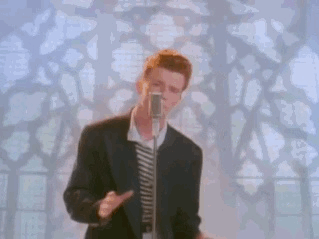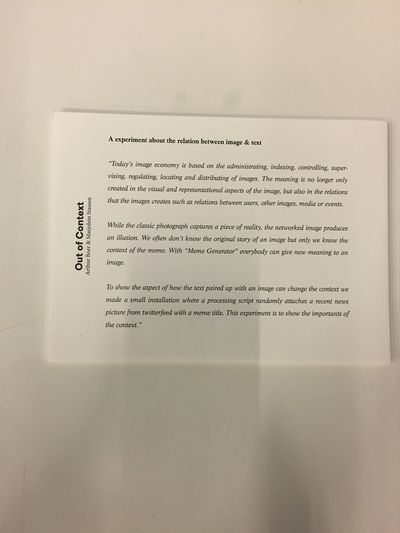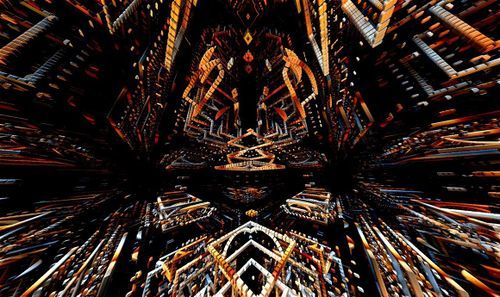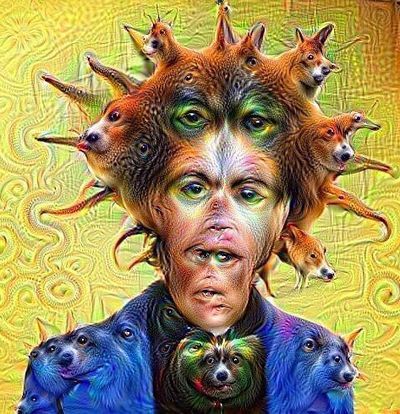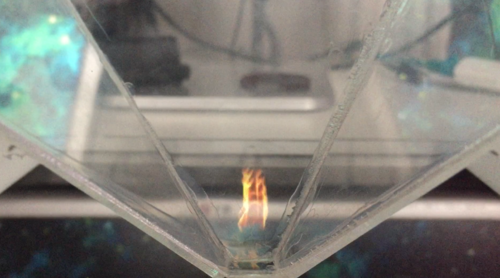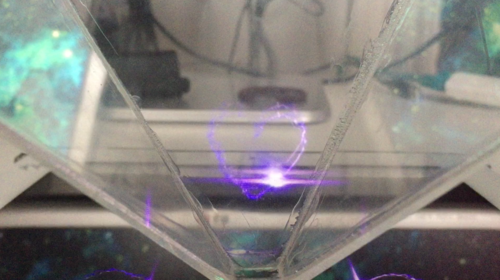User:MarjoleinStassen/UTC
Contents
UNRAVEL THE MEME
For this first project you will take look at particular given memes and analyse them. Formulate your own questions in order to dissect, interpret, assess, the meme. For example: What characterizes your meme? How is it used? How widespread is it? Where did it originate from? What are keywords that you would attach to it? What is it’s effect? What are it’s components? What does it link to? What is your opinion of this meme? How is it transformed? How would you categorize it’s iterations? What story might you want to tell about this meme? And how would you visualize this story? Ultimately your findings will be displayed as a mini-exhibition during the Wereld van Witte de With.
RICKROLLED
In 1987 Rick Astley was released, making it a solo debut single of the album 'Whenever You Need Somebody'. Later at the 4CHAN community, one of the founders m00t, says that the RickRolling started on the VideoGame board circa May 2007. This all started with the predecessor named 'DuckRoll'. The Duckroll all started because a word filter on the 4CHAN boards turned the word "egg" into "duck". When typing eggroll it would turn into duckroll. Later a picture with a duck on wheels became popular "Duckroll" by send it to a friend or someone who is anticipating something and gets this picture to trick them. Basically getting a duckroll when instead they want to see another picture.
Since the game GTA IV was so anticipated int he year 2007 people started to link Rick Astley's video on the 4CHAN platform disguising it as a sneak preview or trailer for the anticipated game. This is how the RickRoll all started. It is a 'Bait and Switch' type of joke.
This can happen on Youtube itself, with misleadingly titled videos, or with links from other sites to youtube. These videos usually have a misleading image in the middle of the video, so that the thumbnail on youtube looks legit. Sometime they even make names that seem legit.
Timeline
- 2007 (APRIL/MAY): 4CHAN, DuckRoll.
- 2008: Gaming Scene, GTA IV Sneak Peak Release video is Rick Astley’s music video
- 2008: Youtube uses it as April Fools Joke.
- 2008: NYC Mets uses “Never going to give you up” as 8th inning song, because of popular vote of the people
- 2008: Rick Astley gets to preform his classic song on the Macy's Thanksgiving Parade after 14 years.
- 2008: Rick’s song becomes so popular that he even gets voted for “Best Act Ever” in the MTV European Music Awards.
- 2008: Studies show that in 2008 18 million adult Americans were RickRolled.
- 2010: Lyrics are used by Oregon’s house of Representatives during a House Sessions.
- 2010: WikiLeaks uses lyrics in an article about serious attacks on Visa, MasterCard, Amazon and Paypal
- 2011: The Whitehouse tweets a link, which is actually a link to Rick Astley’s music video.
Popularity
The reason why it became so popular was because it was a way to be part of the joke. The Rickrolling slowly expanded from the Gaming-Scene to more of the mainstream where other anticipated audiences were tricked too. It is also fun to see your friends or known people react to it as a form of Peer-Reaction. This type of jokes have been tormenting the internet from a long time, with not only having the RickRolled as a Bait-and-Switch video there are also others in that same category such as:
- Scary Prank Videos
- Two Girls one Cup
(Don't google for your own safety) - "X Amount of girls online in your neighborhood and want to chat" - Ads
- Fake Close Buttons on Ads
- Fake Outs
Targets
- People Looking for Movie / Game Trailers / Footage
- Abridged Series Watchers
- People who try to watch TV on Youtube
MORE RESEARCH
After exploring our meme we were placed in a group with "Doge" and "3 Wolves Moon". Our overall theme is "CONTEXT". With this over all theme we will make something for the Wereld van Witte de With. For that we need to do additional research on the certain techniques we like to use for Thursday, and have it finalized by then.
Which News Sites
After exploring news sites and how to generate the photos from these websites, we decided to go for twitter feeds instead. Looking at twitter and different feeds we searched for a certain type of feed. We need an active and picture related feed. We want to use these pictures, take them from the feed, and then make it reappear in our Processing document with the generated text. After though research we settled for CNN and BBC World.
Generating Content
For the generation of the twitter content we will probably have to use an API to get our content.
Types of APIs - Source - There are many different types of APIs for operating systems, applications or for websites. Windows, for example, has many API sets that are used by system hardware and applications — when you copy and paste text from one application to another, it is the API that allows that to work. Most operating environments, such as MS-Windows, provide an API so that programmers can write applications consistent with the operating environment. Today, APIs are also specified by websites. For example, Amazon or eBay APIs allow developers to use the existing retail infrastructure to create specialized web stores. Third-party software developers also use Web APIs to create software solutions for end-users.
Popular API Examples - Source -
Programmable Web, a site that tracks more than 13,000 APIs, lists Google Maps, Twitter, YouTube, Flickr and Amazon Product Advertising as some of the the most popular APIs. The following list contains several examples of popular APIs:
- Google Maps API: Google Maps APIs lets developers embed Google Maps on webpages using a JavaScript or Flash interface. The Google Maps API is designed to work on mobile devices and desktop browsers.
- YouTube APIs: YouTube API: Google's APIs lets developers integrate YouTube videos and functionality into websites or applications. YouTube APIs include the YouTube Analytics API, YouTube Data API, YouTube Live Streaming API, YouTube Player APIs and others.
- Flickr API: The Flickr API is used by developers to access the Flick photo sharing community data. The Flickr API consists of a set of callable methods, and some API endpoints.
- Twitter APIs: Twitter offers two APIs. The REST API allows developers to access core Twitter data and the Search API provides methods for developers to interact with Twitter Search and trends data.
- Amazon Product Advertising API: Amazon's Product Advertising API gives developers access to Amazon's product selection and discovery functionality to advertise Amazon products to monetize a website.
Useful Links
Popular Memes
These memes below are a few of the most popular memes we will be using as a substitute text to change the context of the images. By using these titles hopefully this was create an interaction or topic of conversation.
GOODGUY GREG • FOREVER ALONE • YOU DON'T SAY... • NOT BAD! • THEREFORE... ALIENS!! • BAD LUCK BRIAN • WAT? • MOON MOON • DRINKING MY OWN PISS • HOMOPHOBIC SEAL • FIRST WORLD PROBLEM • SCUMBAG STEVE • BRONIES • WOW • FRIENDSHIP IS MAGIC • BITCH PLEASE • WATCH OUT, WE HAVE A BADASS OVER HERE. • OVERLY ATTACHED GIRLFRIEND • I TOOK AN ARROW TO THE KNEE • RIDICULOUSLY PHOTOGENIC GUY • SEE ME ROLLIN', THEY HATIN' • DERP • ONE DOES NOT SIMPLY WALK INTO MORDOR • HATERS GONNA HATE • DO YOU EVEN LIFT, BRO? • SOCIALLY AWKWARD PENGUIN • SERIOUSLY? • TRUE STORY • DEAL WITH IT • AIN'T NOBODY GOT TIME FOR THAT • I THANK NOT ONLY GOD BUT ALSO JESUS • U MAD? • LOOK AT ALL THE FUCKS I GiVE I DON'T WANT TO LIVE ON THIS PLANET ANYMORE • 2/10 WOULD NOT BANG • I LIED • OH GOD... WHY • HONEY BADGER DON'T CARE • COME AT ME BRO • MY BODY IS READY • WORK-SAFE PORN • THAT ESCALATED QUICKLY • MOTHER OF GOD • SHUT UP AND TAKE MY MONEY • LIKE A BOSS • IT'S A TRAP! • RUINED CHILDHOOD • CLOSE ENOUGH • DEAL WITH IT!
CONCEPT
Since the over all theme is "CONTEXT" we had two types of contexts that we are incorporating. We want to show that by changing the text of an image it can create a new context of the image. The story behind it will change and it might even change the topic conversation because of his certain image. The other part is the context of "RickRolling" it all started with substituting a link with other content.
TECHNICALITIES
By taking news pictures from a twitter feed we get a reliable source of content and data. All the data is gathered by the processing script and from a text file is selected at random which is why the pictures can make no sense or be really rude/funny. The code also has an offline version which takes the pictures from a folder instead of a live feed.
DOWNLOADS
Down below are downloadable links, mainly our presentations.
- Pitch Presentation: Out of Context
- PDE Script: Online + Data Pictures
- PDE Script: Offline + Java Library
END RESULTS
On Thursday we had our first presentation at Eendrachtstraat and later that weekend it was present at Witte de With festival.
UNRAVEL THE INFRA-ORDINARY
Design/make/craft one or more objects, spaces (or both) that address changes in physical and/or social behaviour in public and private space due to digital devices. The final design must be based on findings from your initial research and should relate to a clearly articulated perspective. Examples of possible perspectives are: critical, speculative, practical, visionary or other.
BRAINSTORM
RITUAL - Phone on table during dinner. - Taking phone to toilet. - Google as a doctor. - Filter for Information
BELIEFS - Disrupted Brainwaves
DISFIGURATION - Neck Muscles / Shoulders - Loss of Eyesight and Hearing - Small Typography - Technology ruins reading and writing - Isolation - Lack of Social Skills - Obesity - Poor Sleeping Habits - Pollution - Increased Bullying - Lack of Privacy - Wrapped sense on Reality - Stress - Shortened attention span - Addiction - Lack of Empathy
HABITS - Not taking on ‘Unknown Caller' - Always connected - TV is Background noise - Listening to music in Public - Always carrying an USB - Wifi is everywhere - No time is wasted - Never unreachable - Illegally obtaining content - Impatient Culture, No waiting needed - No one gets birthday cards - Overeating on content
WRAPPED SENSE ON REALITY - Using the internet as an escape from real life is very easy to do. In real life you only speak to a few people each day, there’s no Photoshop or avatar for the reflection in your mirror, bills must be paid and saying smartass things is frowned upon. However, online you are a freaking rock star! You have enough “friends” to form a small country, you look great in your pics or you have a kickass avatar, plus you get rewards or points for saying clever things (more if the clever thing is also mean-spirited). Unfortunately we must live in the real world whether we like it or not.
- Addiction (Drug)
- Lack of Social Skills
- Isolation
- Poor sleeping Habits
RESEARCH
Perspective - Mental Disfiguration
Last month, Google revealed that it uses its own artificial intelligence program, known as Artificial Neural Networks, to classify and sort its images. The technology basically works by spotting patterns in pictures in order to identify them -- and it's already being used in Google's new photos app to recognise faces and animals. DeepDream is a computer vision program created by Google which uses a convolutional neural network to find and enhance patterns in images via algorithmic pareidolia, thus creating a dreamlike hallucinogenic appearance in the deliberately over-processed images.
Artificial Neural Networks
In machine learning and cognitive science, artificial neural networks (ANNs) are a family of statistical learning models inspired by biological neural networks (the central nervous systems of animals, in particular the brain) and are used to estimate or approximate functions that can depend on a large number of inputs and are generally unknown. Artificial neural networks are generally presented as systems of interconnected "neurons" which exchange messages between each other. The connections have numeric weights that can be tuned based on experience, making neural nets adaptive to inputs and capable of learning.
For example, a neural network for handwriting recognition is defined by a set of input neurons which may be activated by the pixels of an input image. After being weighted and transformed by a function, the activations of these neurons are then passed on to other neurons. This process is repeated until finally, an output neuron is activated. This determines which character was read. Like other machine learning methods - systems that learn from data - neural networks have been used to solve a wide variety of tasks that are hard to solve using ordinary rule-based programming, including computer vision and speech recognition.
These nightmarish images offer a unique and mesmerizing insight into how computers see the world - and what happens when a mind-bogglingly complex system of artificial intelligence is let off its leash. To discern and process the billions of photos that pass through its site, Google engineers designed ingenious tools known as artificial neural networks, or 'ANNs'. Google's ANNs are programmed, through an endless stream of similar photos, to recognize objects within images by their distinctive characteristics. For example, the ANN will be taught to recognize a fork by processing millions of pictures of forks - eventually understanding that it has a handle and two to four tines.
Now Google is offering the public these networks' codes - allowing people to upload photos and mutate them into terrifying and wonderful versions of the original. A simplified explanation would be to say that the ANNs recognize patterns within images, in the same way a child might spot a shape within a cloud. Recognition of such patterns can be exaggerated so that, while processing an image, the ANN turns a normal-looking photo into a psychedelic nightmare by enhancing swirls and blemishes it has misinterpreted for other objects. Going a little deeper, Google's ANNs consist of 10 to 30 layers. When an image is fed into an ANN, each layer progressively extracts more complex information from the picture, from edges to shapes until finally the idea of the image as a whole is formed.
Computer geniuses recently realized that when images are processed using higher-level layers - which identify more sophisticated traits in the picture - complex features or even whole objects begin to emerge. If a blemish on a face looks like part of an eye, the layers of the ANN can be manipulated to enhance this blemish and run with its recognition of an eye - repeating the process until an actual eye appears. The results of this 'DeepDream' software are surreal and can turn some of the world's most recognizable photos into bizarre, beautiful and abstract forms of themselves. Unfortunately, just to use the software requires a level of expertise beyond the vast majority of people.
Computer vision
Computer vision is a field that includes methods for acquiring, processing, analyzing, and understanding images and, in general, high-dimensional data from the real world in order to produce numerical or symbolic information, e.g., in the forms of decisions.[1][2][3][4] A theme in the development of this field has been to duplicate the abilities of human vision by electronically perceiving and understanding an image. This image understanding can be seen as the disentangling of symbolic information from image data using models constructed with the aid of geometry, physics, statistics, and learning theory. Computer vision has also been described as the enterprise of automating and integrating a wide range of processes and representations for vision perception.
As a scientific discipline, computer vision is concerned with the theory behind artificial systems that extract information from images. The image data can take many forms, such as video sequences, views from multiple cameras, or multi-dimensional data from a medical scanner. As a technological discipline, computer vision seeks to apply its theories and models to the construction of computer vision systems.
Sub-domains of computer vision include scene reconstruction, event detection, video tracking, object recognition, object pose estimation, learning, indexing, motion estimation, and image restoration.
Areas of artificial intelligence deal with autonomous planning or deliberation for robotical systems to navigate through an environment. A detailed understanding of these environments is required to navigate through them. Information about the environment could be provided by a computer vision system, acting as a vision sensor and providing high-level information about the environment and the robot.
Artificial intelligence and computer vision share other topics such as pattern recognition and learning techniques. Consequently, computer vision is sometimes seen as a part of the artificial intelligence field or the computer science field in general.
Artificial intelligence
AI is the intelligence exhibited by machines or software. It is also the name of the academic field of study which studies how to create computers and computer software that are capable of intelligent behavior. Major AI researchers and textbooks define this field as "the study and design of intelligent agents", in which an intelligent agent is a system that perceives its environment and takes actions that maximize its chances of success.
AI research is highly technical and specialized, and is deeply divided into subfields that often fail to communicate with each other. Some of the division is due to social and cultural factors: subfields have grown up around particular institutions and the work of individual researchers. AI research is also divided by several technical issues. Some subfields focus on the solution of specific problems. Others focus on one of several possible approaches or on the use of a particular tool or towards the accomplishment of particular applications.
The central problems (or goals) of AI research include reasoning, knowledge, planning, learning, natural language processing (communication), perception and the ability to move and manipulate objects. General intelligence is still among the field's long-term goals. Currently popular approaches include statistical methods, computational intelligence and traditional symbolic AI. There are a large number of tools used in AI, including versions of search and mathematical optimization, logic, methods based on probability and economics, and many others. The AI field is interdisciplinary, in which a number of sciences and professions converge, including computer science, mathematics, psychology, linguistics, philosophy and neuroscience, as well as other specialized fields such as artificial psychology.
Cognitive science
Cognitive Science is the interdisciplinary scientific study of the mind and its processes. It examines what cognition is, what it does and how it works. It includes research on intelligence and behaviour, especially focusing on how information is represented, processed, and transformed (in faculties such as perception, language, memory, attention, reasoning, and emotion) within nervous systems (humans or other animals) and machines (e.g. computers). Cognitive science consists of multiple research disciplines, including psychology, artificial intelligence, philosophy, neuroscience, linguistics, and anthropology. It spans many levels of analysis, from low-level learning and decision mechanisms to high-level logic and planning; from neural circuitry to modular brain organization. The fundamental concept of cognitive science is that "thinking can best be understood in terms of representational structures in the mind and computational procedures that operate on those structures."
Handwriting recognition
HWR is the ability of a computer to receive and interpret intelligible handwritten input from sources such as paper documents, photographs, touch-screens and other devices. The image of the written text may be sensed "off line" from a piece of paper by optical scanning (optical character recognition) or intelligent word recognition. Alternatively, the movements of the pen tip may be sensed "on line", for example by a pen-based computer screen surface.
Handwriting recognition principally entails optical character recognition. However, a complete handwriting recognition system also handles formatting, performs correct segmentation into characters and finds the most plausible words.
Internet addiction disorder
IAD, now more commonly called problematic Internet use (PIU), compulsive Internet use, (CIU), Internet overuse, problematic computer use, pathological computer use, or iDisorder, refers to excessive computer use which interferes with daily life. Other habits such as reading, playing computer games, or watching very large numbers of Internet videos, such as those on YouTube, are troubling only to the extent that these activities interfere with normal life. IAD is often divided into subtypes by activity, such as gaming; online social networking; blogging; email; excessive, overwhelming, or inappropriate Internet pornography use; or Internet shopping (shopping addiction). Opponents note that compulsive behaviors may not necessarily be addictive.
Some people are addicted to browsing Web literally informing themselves to death and spending behind the computer for 10 or more hours a day. For such persons, browsing replaces most of other activities and serves as a substitute of TV. It is not uncommon for them to be sitting in front of the computer for four or more hours straight on Saturday or Sunday. People with "web browsing compulsion" tend to lose all sense of time when they are on-line. They are drawn so deeply into the world of bytes and bits that they do not notice entire days passing by. They forget to eat, sleep, go to school, communicate with family members and even care for their children. Like compulsive computer gamers they shirk responsibilities, slack off at work, and miss appointments because they are unable to pull themselves away. We will call them Netslaves Type II (to distinguish them from Netslaves Type I described in books by Bill Lessard, Steve Baldwin.
Addiction
People with an addiction do not have control over what they are doing, taking or using. Their addiction may reach a point at which it is harmful. Addictions do not only include physical things we consume, such as drugs or alcohol, but may include virtually anything, such abstract things as gambling to seemingly harmless products, such as chocolate - in other words, addiction may refer to a substance dependence (e.g. drug addiction) or behavioral addiction (e.g. gambling addiction). In the past addiction used to refer just to psychoactive substances that cross the blood-brain barrier, temporarily altering the chemical balance of the brain; this would include alcohol, tobacco and some drugs. A considerable number of psychologists, other health care professionals and lay people now insist that psychological dependency, as may be the case with gambling, sex, internet, work, exercise, etc. should also be counted as addictions, because they can also lead to feelings of guilt, shame, hopelessness, despair, failure, rejection, anxiety and/or humiliation.
TO READ LIST / SOURCES
- http://neuralnetworksanddeeplearning.com/chap1.html
- https://en.wikipedia.org/wiki/Artificial_intelligence
- https://en.wikipedia.org/wiki/Cognitive_science
- https://en.wikipedia.org/wiki/Artificial_neural_network
- https://en.wikipedia.org/wiki/Computer_vision
- https://en.wikipedia.org/wiki/Internet_addiction_disorder
- http://www.medicalnewstoday.com/info/addiction/
AWESOME VIDEOS!
- https://www.youtube.com/watch?v=uVqknClNoOM
- https://www.youtube.com/watch?v=SCE-QeDfXtA
- https://www.youtube.com/watch?v=DkFmHni1Grg
- https://www.youtube.com/watch?v=ghEmQSxT6tw
OTHER LINKS
- http://psychic-vr-lab.com/deepdream/
- http://deepdreamgenerator.com/
- http://electricdogs.tumblr.com/
- https://deepdream.in/
HOLOGRAM
Holography is the science and practice of making holograms. Typically, a hologram is a photographic recording of a light field, rather than of an image formed by a lens, and it is used to display a fully three-dimensional image of the holographed subject, which is seen without the aid of special glasses or other intermediate optics. The hologram itself is not an image and it is usually unintelligible when viewed under diffuse ambient light. It is an encoding of the light field as an interference pattern of seemingly random variations in the opacity, density, or surface profile of the photographic medium. When suitably lit, the interference pattern diffracts the light into a reproduction of the original light field and the objects that were in it appear to still be there, exhibiting visual depth cues such as parallax and perspective that change realistically with any change in the relative position of the observer.
We made our own hologram to make the addiction and being absorbed into the mobile more realistic. The tutorial we found on the internet shows that the plexiglass reflects the image underneath it, creating a hologram in the middle. We wanted to use this technique with our own made hologram animation to bring out our concept of 'Mental Disfiguration'. Not only is there a wrapped sense that the mobile content is coming to life but with the hologram we are trying to suck people even more into the fake reality of their phones.
First Experiments
UNRAVEL THE FUTURE MEMORY
First class Jon Stam for project Haptics in the project 'Crafting Future Memory'.
MUSCLE MEMORY // RESPONSIVENESS (LIFE THREATENING SITUATIONS)
- How to fall
- Diving
- Playing Instrument
- Biking
- Horse Riding
- Writing
- Nascar Drivers
https://www.youtube.com/watch?v=zgU0QeBYH68 - One Breath Diving
- Ignoring Voice Warning in Brain
- Shutting
